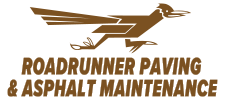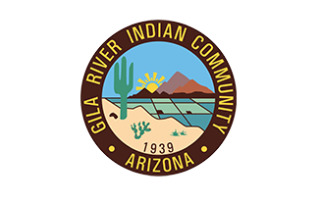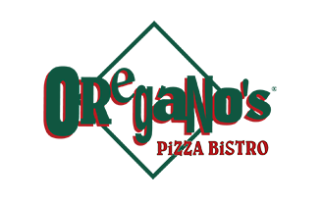SURFACE REPAIRS
Asphalt surface repairs refer to the process of fixing or restoring damaged areas on an asphalt pavement. Asphalt surfaces, such as roads, driveways, parking lots, and pathways, can develop various types of damage over time due to factors like weather, traffic, and regular wear and tear. Repairs are essential to maintain the integrity and functionality of the asphalt surface.
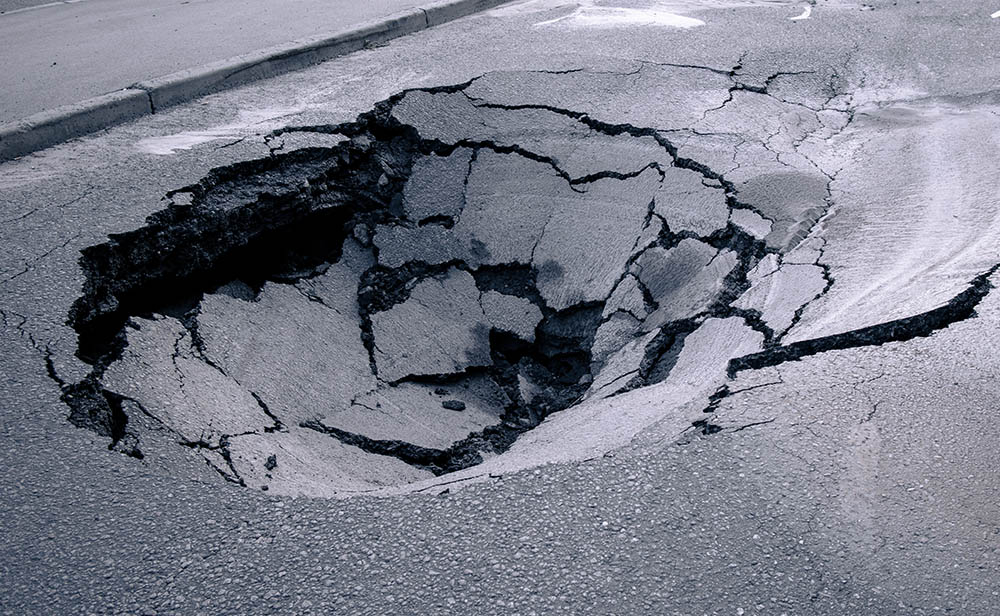
It’s important to note that asphalt surface repairs should be carried out by experienced professionals who understand the specific requirements and techniques involved. Proper repair techniques and materials are crucial for ensuring the longevity and durability of the repaired surface. Regular maintenance, such as sealcoating and crack sealing, can also help extend the lifespan of asphalt surfaces and minimize the need for extensive repairs.
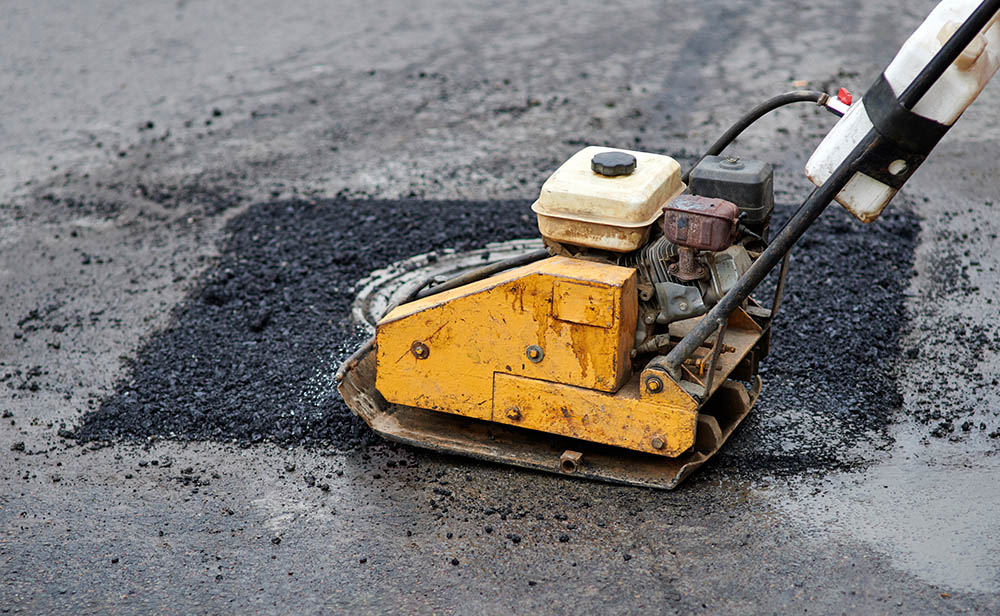
CRACK SEAL
Crack sealing is a maintenance process used to repair cracks in pavement surfaces, particularly in asphalt or concrete. Over time, pavement surfaces can develop cracks due to various factors such as weathering, traffic loads, and aging. These cracks can allow water and debris to penetrate the pavement layers, leading to further deterioration and potentially causing more significant structural problems.
Crack sealing involves the application of specialized materials to fill and seal the cracks in the pavement. The materials used for crack sealing are typically rubberized asphalt-based products or polymer-modified asphalt. These materials have adhesive properties and are designed to expand and contract with the pavement’s movement, ensuring a flexible and durable seal.
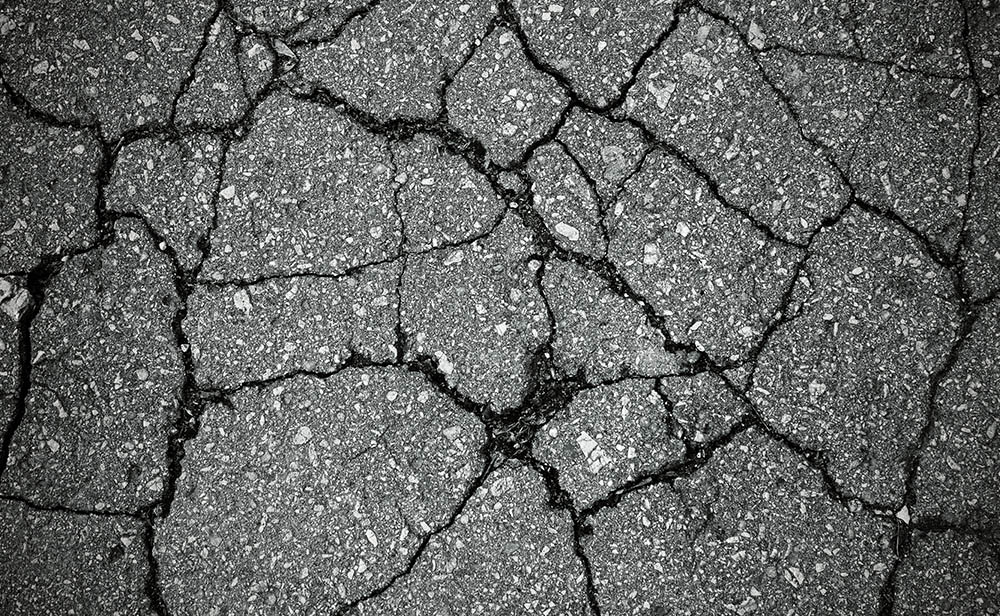
Crack sealing is an important preventive maintenance technique used by municipalities, highway agencies, and property owners to extend the life of pavements, minimize water infiltration, and reduce the formation of potholes. Regular crack sealing can help protect the structural integrity of the pavement and prolong its service life.
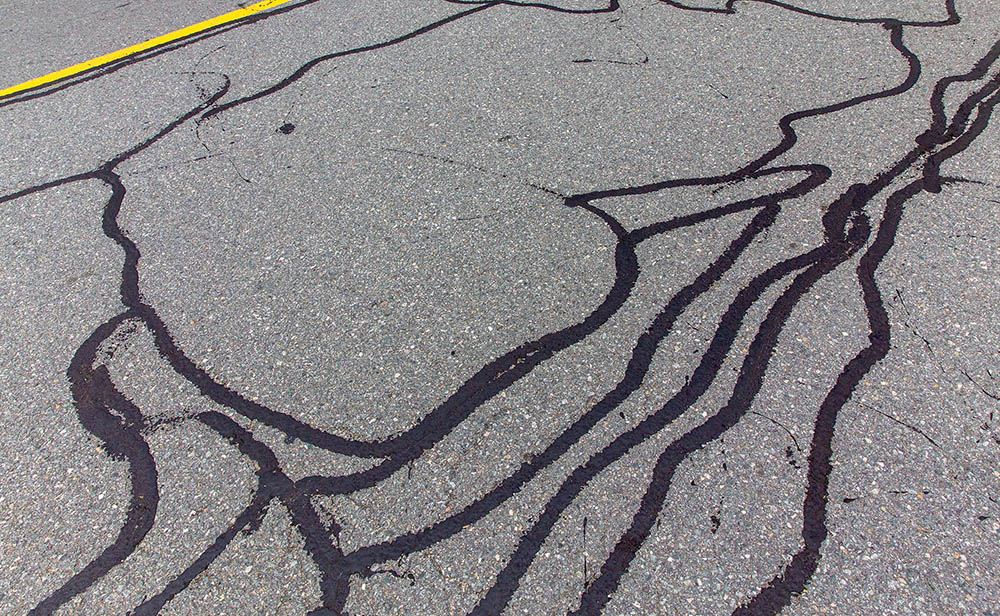
Call Roadrunner Paving today to find out why we are the pavement repair experts Arizona residents trust. We can restore and repair your pavement to make it safe and beautiful once again.
SEAL COAT
Seal coating, also known as pavement sealing, is a protective layer applied to asphalt-based pavements like roads, driveways, parking lots, and other surfaces. It is a common maintenance practice aimed at extending the lifespan of the pavement by protecting it from the damaging effects of water, sunlight, oil, and other substances.
Over time, asphalt loses its binder due to everyday wear and tear and exposure to the elements, such as heat and rain. In particular, the hot Arizona sun can cause oxidation on the pavement, which dries out the pavement and advances the aging process. The combination of oxidation and everyday wear and tear can wreak havoc on asphalt over time.
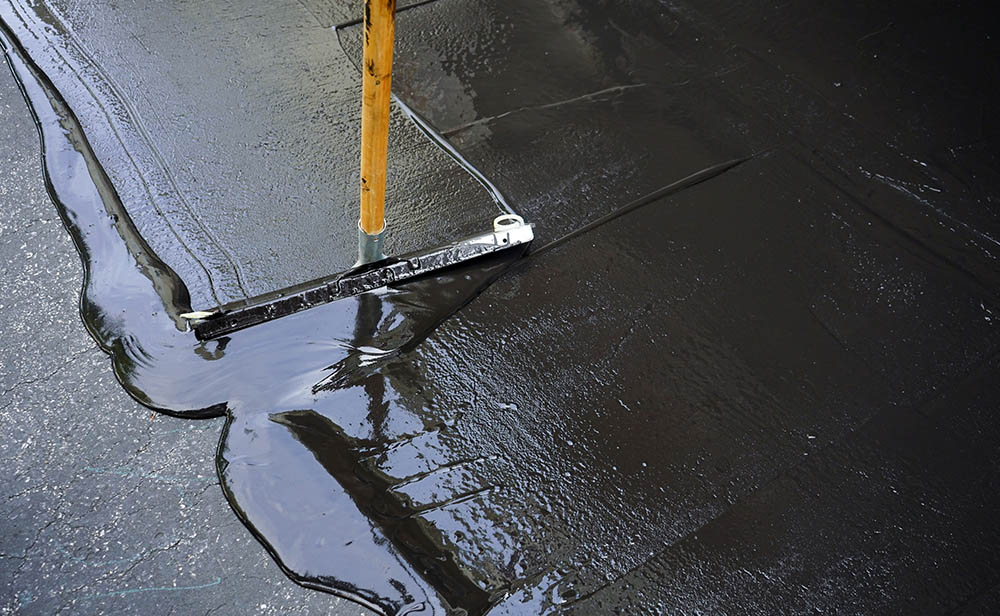
Here’s how seal coating works and its benefits:
- Protection: Seal coating acts as a barrier against harmful elements like water, UV rays, chemicals, and oil that can deteriorate the asphalt over time. It prevents these elements from penetrating the pavement and causing cracks, oxidation, and structural damage.
- Prevention of Cracking: Cracks can develop in asphalt surfaces due to temperature changes, traffic loads, and environmental factors. Seal coating fills in minor cracks and prevents them from expanding, reducing the likelihood of more extensive damage.
- Enhanced Appearance: Seal coating gives pavements a dark black finish, which not only looks aesthetically pleasing but also gives the impression of a well-maintained area.
- Easier Cleaning: The smooth surface created by seal coating makes it easier to clean dirt, debris, and spills from the pavement, improving the overall cleanliness of the area.
- Cost-Effective Maintenance: Regular seal coating can significantly extend the life of the pavement, delaying the need for more expensive repairs or resurfacing.
- UV Protection: Asphalt surfaces can be damaged by the sun’s ultraviolet (UV) rays, leading to fading and deterioration. Seal coating provides a protective layer against UV damage.
- Chemical Resistance: Seal coating acts as a barrier against oil, gasoline, and other chemicals that can break down the asphalt binder.
- Improved Safety: Seal coating can enhance traction, reducing the likelihood of accidents caused by slippery surfaces.
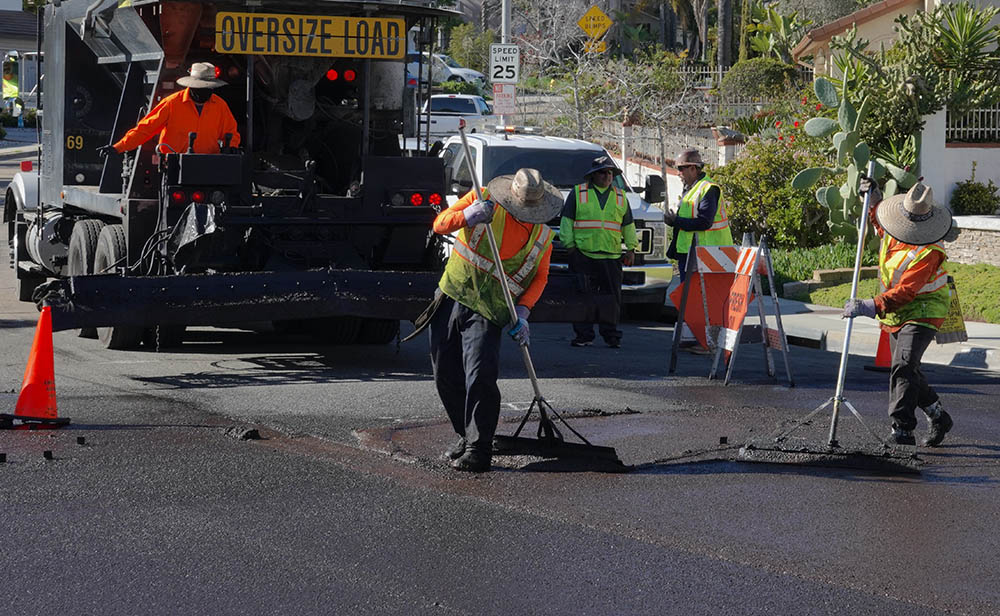
It’s important to note that seal coating is a preventive maintenance measure and is not suitable for pavements with significant structural issues. Proper timing of seal coating, typically every 2 to 3 years, is crucial to ensure its effectiveness in protecting the pavement. Not only does sealcoating improve the expected life of your asphalt, but it also gives it a fresh look that will make the right impression on your clients.
At Roadrunner Paving and Asphalt Maintenance, we recommend sealing your asphalt pavement every couple of years for maximum protection. In doing so, you will ensure that your asphalt pavement has a better chance of meeting its projected life expectancy, which will save you a lot of money in the long run.
SLURRY SEAL
A slurry seal is a maintenance treatment that prolongs the life of asphalt at a fraction of the cost of full pavement (structural) repair.
Benefits:
- Surface Protection: Asphalt slurry helps protect the underlying pavement from water infiltration, oxidation, and minor surface cracks.
- Improved Traction: The texture of the slurry surface can enhance traction for vehicles.
- Cost-Effective: Slurry seal is relatively cost-effective compared to other pavement maintenance methods, making it a popular choice for municipalities and agencies with limited budgets.
- Quick Application: It dries relatively quickly, minimizing the disruption to traffic and allowing roads to reopen sooner after application.
The main difference between a slurry and a seal coat is that a slurry is thicker than a sealcoat. A slurry uses larger aggregates in its mix while sealcoats contain smaller, or in some cases; no aggreagates, in its mix.
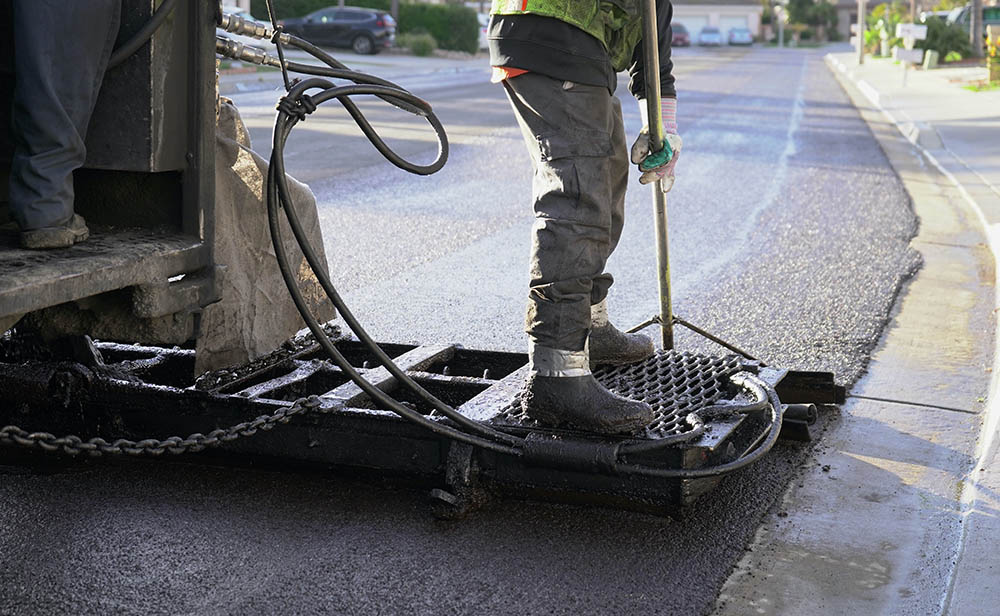
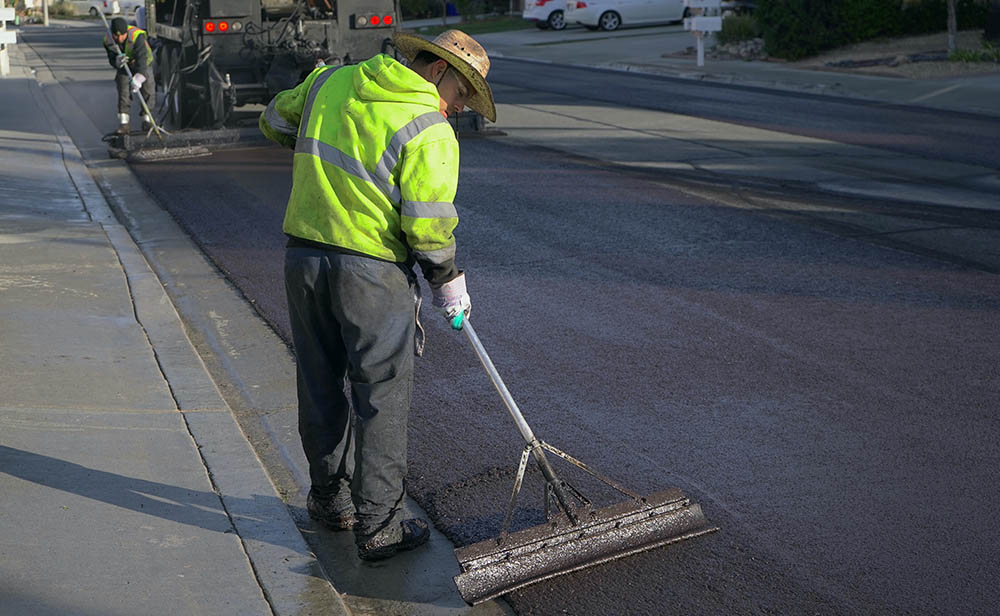
REMOVE AND REPLACE
“Remove and Replace” in the context of asphalt refers to the process of removing old or damaged asphalt pavement and then installing new asphalt in its place. This process is commonly used to repair and rejuvenate deteriorated roadways, parking lots, driveways, and other asphalt surfaces.
It’s important to note that asphalt remove and replace projects require skilled professionals and specialized equipment. The quality of the workmanship and materials used significantly impacts the longevity and durability of the new asphalt surface. Proper maintenance after the project is also crucial to extend the life of the pavement.
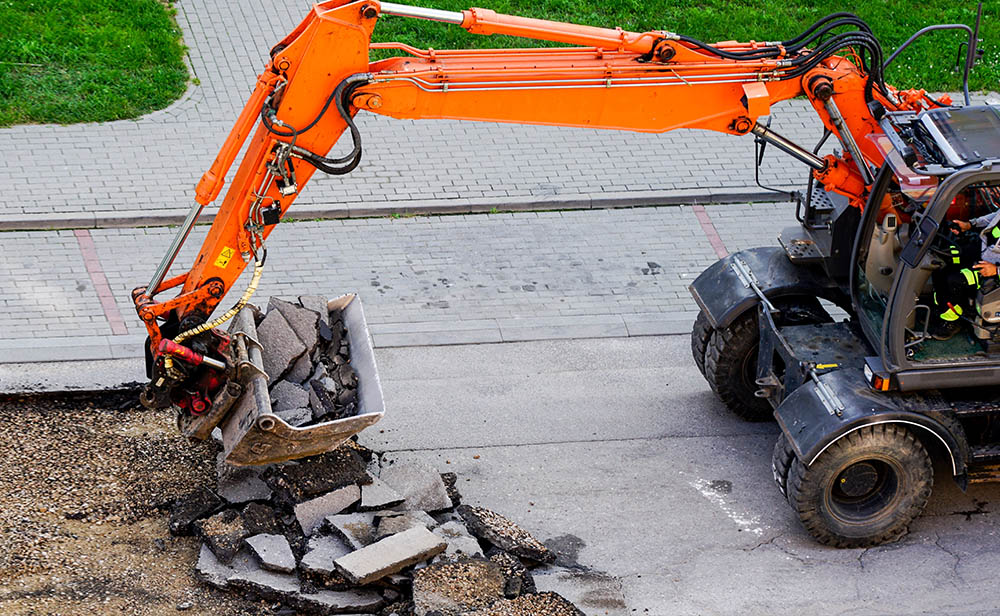
OVERLAY
Asphalt overlay, often referred to as resurfacing or pavement overlay, is a common maintenance technique used for roads, driveways, parking lots, and other asphalt surfaces. It involves applying a new layer of asphalt over the existing pavement. Over time, asphalt surfaces can deteriorate due to factors such as weather, traffic load, and aging. This can lead to cracks, potholes, and uneven surfaces. Asphalt overlay addresses these issues by providing a fresh, smooth layer of asphalt. This procedure is done to restore the smoothness and functionality of the road or surface without completely reconstructing it.
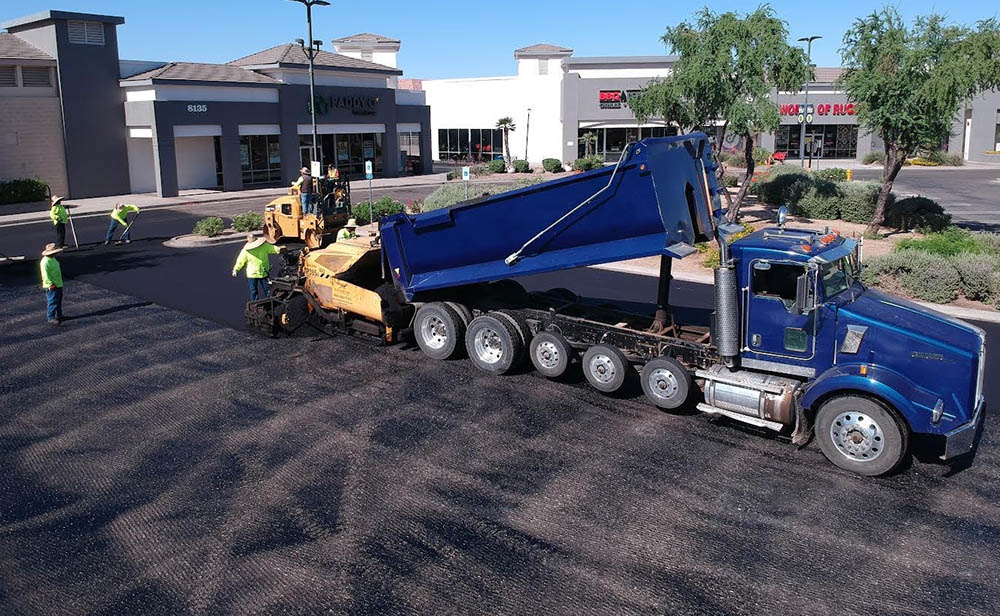
MILL AND PAVE
“Asphalt mill and pave” is a common construction process used to resurface or rehabilitate asphalt roads or pavements. It involves two main steps: milling and paving. This process is used to repair deteriorated asphalt surfaces, improve ride quality, and extend the lifespan of the pavement. Here’s an overview of each step:
-
Milling: The milling process involves the removal of the top layer of the existing asphalt pavement. This is usually done using specialized machinery called milling machines or cold planers. These machines have a large rotating drum with cutting teeth that grind and remove the old asphalt surface. The depth of the milling can vary based on the condition of the pavement and the desired final surface level. The milled material is collected and transported away from the site for recycling or disposal.
-
Paving: Once the old asphalt surface has been milled away, the next step is to pave a new layer of asphalt on top of the milled area. This is usually done using asphalt paving machines. The new asphalt layer is laid down in multiple passes to achieve the desired thickness and smoothness. It’s important to ensure proper compaction during the paving process to achieve a durable and long-lasting surface.
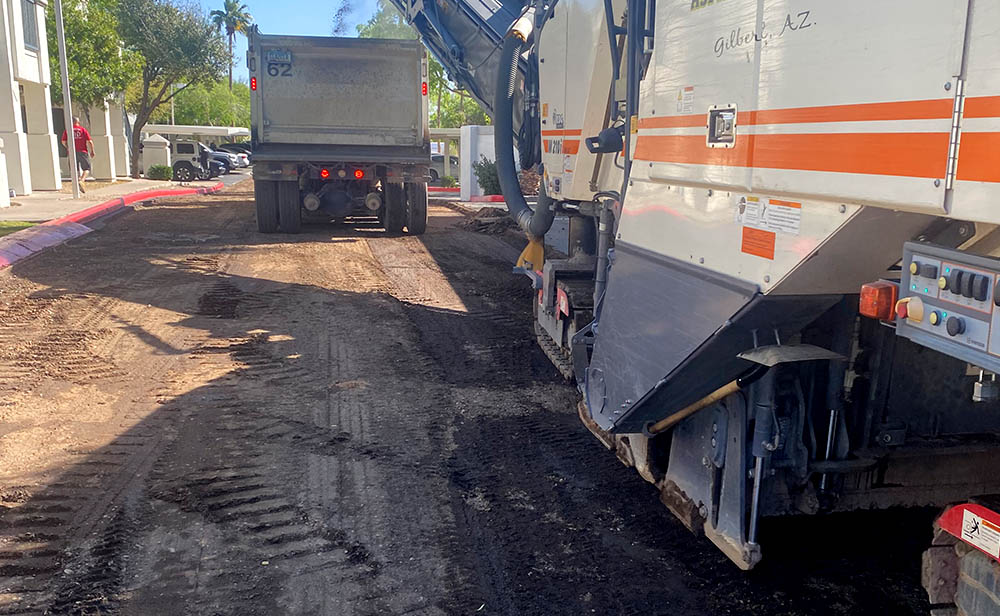
“Asphalt mill and pave” is a common construction process used to resurface or rehabilitate asphalt roads or pavements. It involves two main steps: milling and paving. This process is used to repair deteriorated asphalt surfaces, improve ride quality, and extend the lifespan of the pavement. Here’s an overview of each step:
-
Milling: The milling process involves the removal of the top layer of the existing asphalt pavement. This is usually done using specialized machinery called milling machines or cold planers. These machines have a large rotating drum with cutting teeth that grind and remove the old asphalt surface. The depth of the milling can vary based on the condition of the pavement and the desired final surface level. The milled material is collected and transported away from the site for recycling or disposal.
-
Paving: Once the old asphalt surface has been milled away, the next step is to pave a new layer of asphalt on top of the milled area. This is usually done using asphalt paving machines. The new asphalt layer is laid down in multiple passes to achieve the desired thickness and smoothness. It’s important to ensure proper compaction during the paving process to achieve a durable and long-lasting surface.
The “asphalt mill and pave” process offers several benefits:
-
Surface Renewal: The process removes deteriorated and cracked asphalt, providing a fresh surface that improves the overall appearance and ride quality of the road.
-
Structural Improvement: By removing the old surface and repaving with new asphalt, the structural integrity of the pavement is improved, which can extend the life of the road.
-
Safety: Smoother surfaces with fewer cracks and potholes contribute to safer driving conditions for motorists.
-
Cost-Effectiveness: While it might seem counterintuitive, in many cases, resurfacing through milling and paving can be more cost-effective than patching individual areas repeatedly.
-
Sustainability: The milled asphalt material can often be recycled and used in new asphalt mixes, reducing the demand for new raw materials.
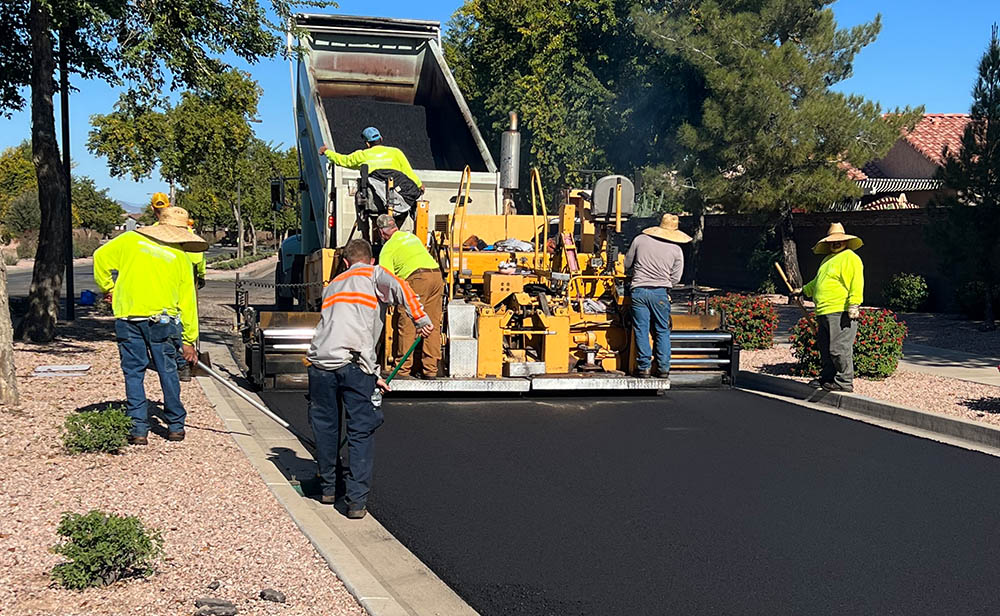
STRIPING
Striping may not seem like an important part of your paving job, but it is. Though it may seem like simply an aesthetic issue, it can actually have a big impact on the safety of your roadways or parking lots, and it can make a big impression on your clients or constituents.
“Striping” actually refers to any pavement markings to help direct the flow of traffic, including lane markers, parking space designations, shoulder borders, turn arrows, crosswalk lines, stops and more. All of these are essential markers that help people understand not only where the lanes and parking spaces are, but also how they are to behave in traffic, such as whether they are able to change lanes or where they must stop.
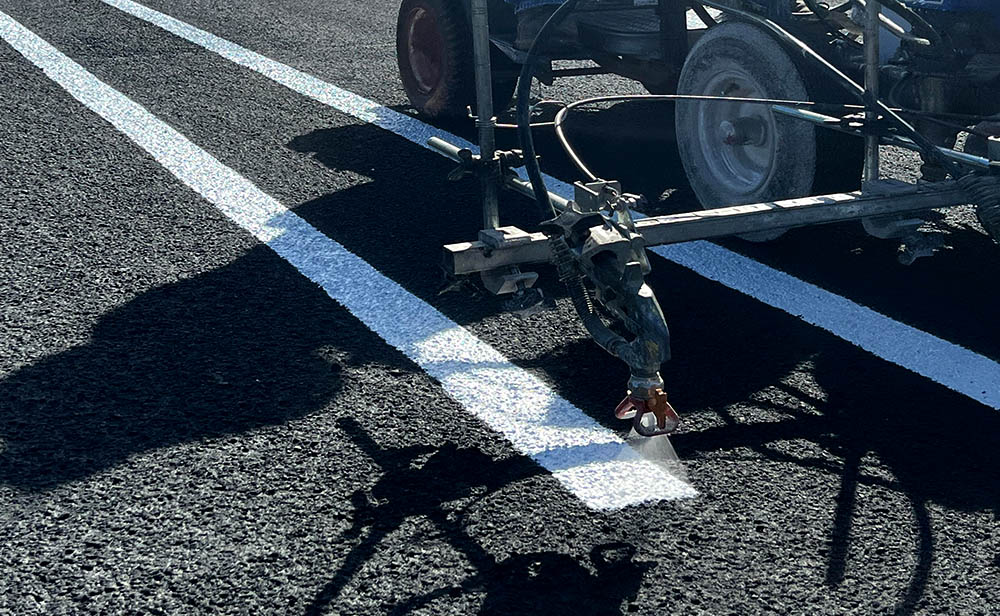
Without these markings, drivers can easily veer into the wrong lane and have an accident. In a parking lot, cars can haphazardly take up random spaces that make it harder for other cars or pedestrians to navigate the lot.
If your pavement is missing these markings or if the paint has faded to the point where the markings are hard to see, your clients will think poorly of your professionalism. You may even become liable for any accidents on the property. A fresh and beautiful striping job adds that “wow” factor to your property that will inspire customer confidence.
Finally, striping is often required by city codes, so if you don’t have the right markings, you could face legal penalties.
Roadrunner Paving and Asphalt Maintenance can ensure that your pavement is in compliance and makes a great impression on clients by performing a beautiful striping job that includes all the necessary markings. We can put down striping on new pavement, or we can re-stripe pavement that is starting to show signs of age. We understand all the local codes regarding paving and striping, so we will ensure that you are meeting requirements. Our services include every kind of marking you might need, including stop bars, arrows, hashes, and numbering. We can also accommodate reasonable requests for custom markings.
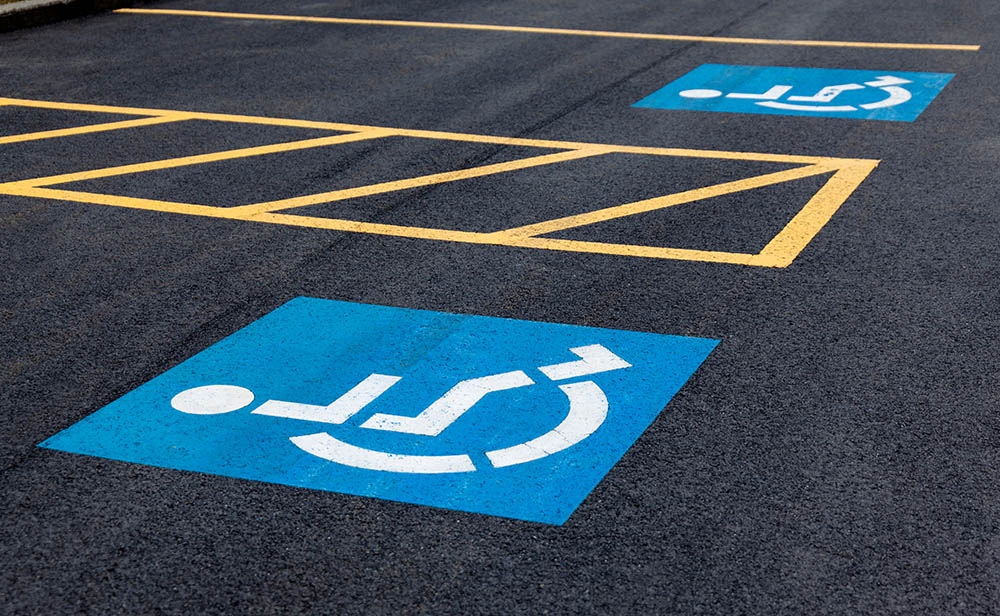
do you have a paving project we can help with?
Some Recent Clients
We value our relationships with clients, past and present. Here are some clients of ours we’re lucky to call friends.
Get A Quote Today
Simply fill out some basic information for us to get a feel for what paving service, or combination of services you need and we will call you as soon as possible. Thank You!
